- Details
- Email Marketing
- Hits: 727
Discover the best email verification tools to boost your email marketing efforts. These tools play a crucial role in enhancing email deliverability, protecting your sender reputation, and saving you valuable time. By ensuring that your email lists are clean and accurate, you can avoid the pitfalls of sending emails to invalid addresses, which can lead to high bounce rates and damage your reputation. Whether you are a small business owner looking to streamline your email marketing campaigns or a large enterprise aiming to maintain a spotless email list, these email verification tools offer the perfect solution. Learn how these tools can help you achieve better engagement with your audience and drive more successful campaigns.
Click on each corresponding link to jump ahead:
- 8 Top Email Verification Tools
- What to Look For in an Email Verification Tool
- Why Email Verification Matters
- Does Google have an Email Verification Tool
- Conclusion
If you are looking for help with email marketing services for your company, contact Profitworks today.
1) 8 Top Email Verification Tools
Selecting the right email verification tool is paramount to optimizing your marketing strategies and ensuring the accuracy of your email lists. By employing an effective email verification tool, you can significantly reduce the chances of sending emails to invalid addresses, thus improving your deliverability rates and overall campaign success. Proper email verification can also help protect your sender's reputation and enhance customer engagement by ensuring that your messages reach valid recipients. There are several effective options available, each offering unique features and benefits that cater to different needs and requirements. Below are seven tools that you may want to consider exploring.
1) Selzy
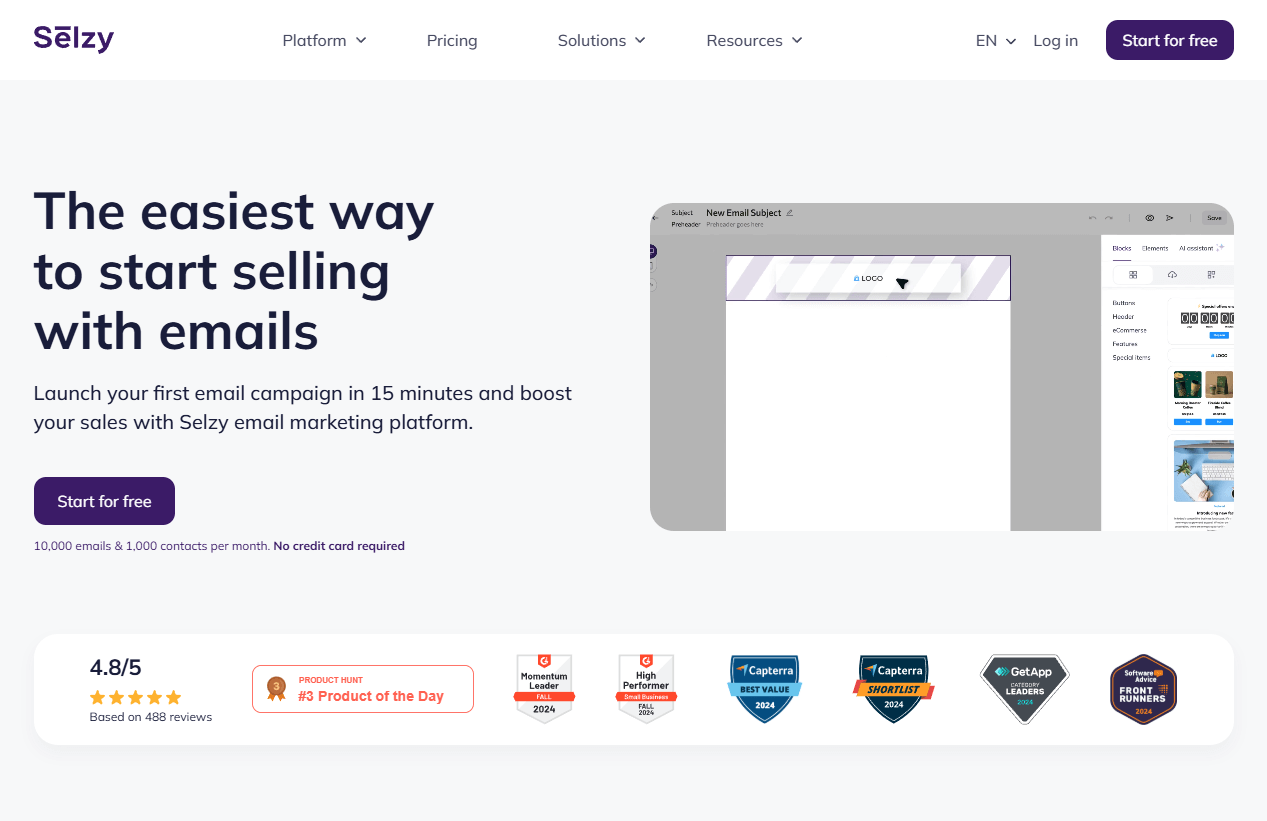
At present, among the underdog email verification tools that really deserve one's attention, is Selzy. Cheaper in comparison, not worse in core functionalities, and as such far, ideal for those who seriously have super restricted resources or were just getting their feet wet with e-marketing. What makes it somewhat special among hundreds of free/low-cost versions is its well-thought-over functionality, considering its reasonable pricing; Selzy presents a free account with 100 contacts, by sending up to 1,500 emails each month, which is pretty fair for a means within this cost range.
For those who need more, paid plans start at about $7 a month, billed annually, which makes Selzy super wallet-friendly. Though not as well-known as some bigger names, Selzy punches above its weight with a drag-and-drop editor, automation options, and decent deliverability. It is a smart deal for beginners or businesses with minimal client lists, desirous of keeping costs low without sacrificing the core principles of email marketing.
2) Mail-tester

Write a description like this "ZeroBounce remains one of the most liked tools among marketers, with strong features and a very high rate of accuracy. To provide top-tier military-grade data encryption, ZeroBounce stands out in ensuring that your data is secure throughout the verification process. It offers both bulk verification and real-time API services, making it versatile for various business needs. One of the best features of ZeroBounce is that it finds catch-alls and spam traps, which are extremely important for the sender's reputation. Besides, ZeroBounce perfectly integrates with systems like HubSpot and Mailchimp, making your workflow much more efficient. Users have reported, though, that it sometimes doesn't find all the disposable addresses, which might lower deliverability rates." for the website mail-tester.com
Here is a description similar to the one you provided:
Mail-tester.com is widely recognized among marketers for its robust features and exceptional accuracy in email verification. This tool ensures that your email campaigns are efficient and that your sender's reputation remains intact. Mail-tester.com offers a detailed analysis of your emails, including identifying issues that may affect deliverability.
One of the standout features of Mail-tester.com is its ability to detect spammy content and validate email server configurations, which are crucial for maintaining a high sender reputation. Additionally, it seamlessly integrates with popular email marketing platforms like SendGrid and Mailchimp, streamlining your workflow. However, some users have noted that its user interface can be slightly complex for beginners, requiring a bit of a learning curve.
3) ZeroBounce
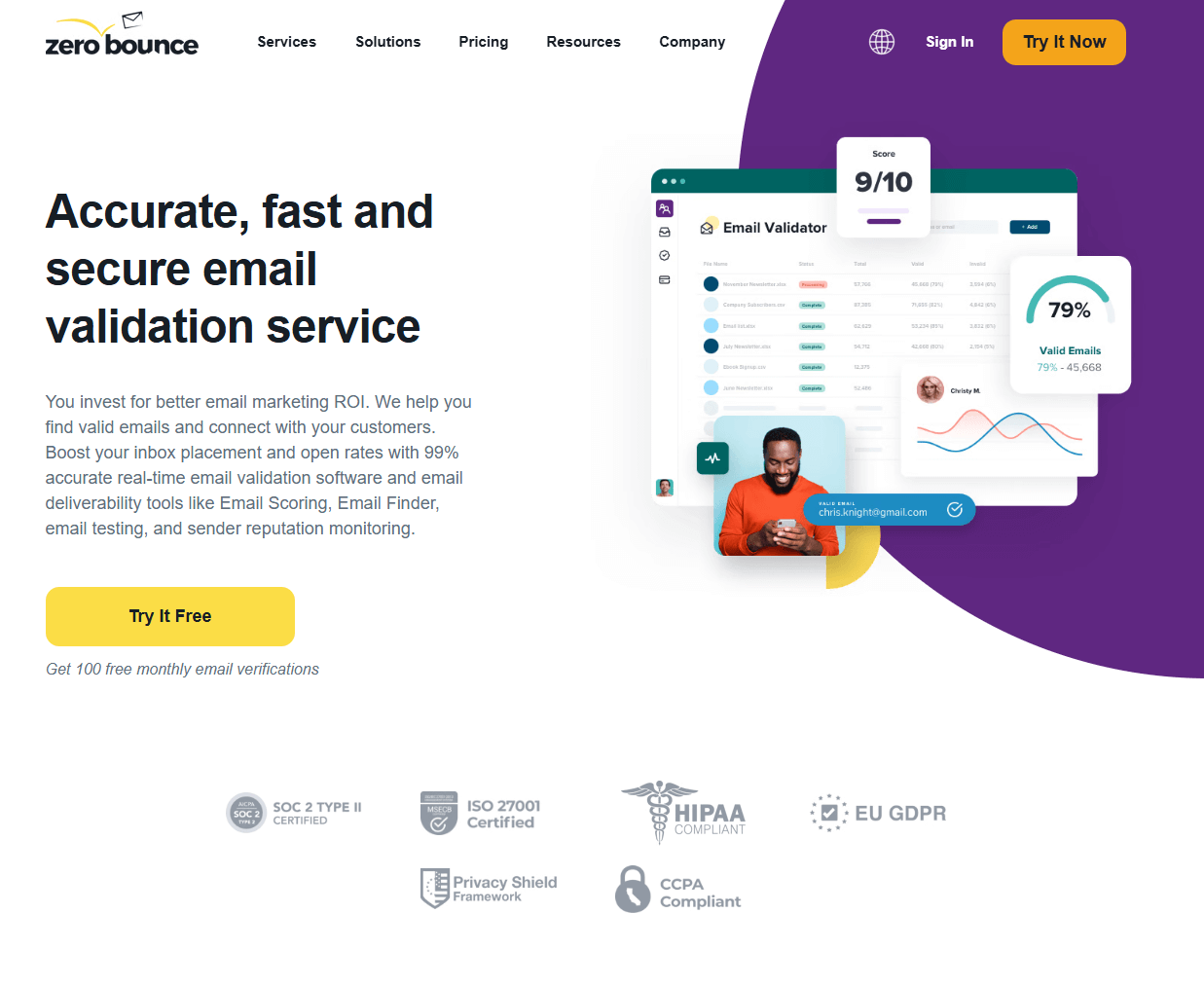
ZeroBounce remains one of the most liked tools among marketers, with strong features and a very high rate of accuracy. To provide top-tier military-grade data encryption, ZeroBounce stands out in ensuring that your data is secure throughout the verification process. It offers both bulk verification and real-time API services, making it versatile for various business needs.
One of the best features of ZeroBounce is that it finds catch-alls and spam traps, which are extremely important for the sender's reputation. Besides, ZeroBounce perfectly integrates with systems like HubSpot and Mailchimp, making your workflow much more efficient. Users have reported, though, that it sometimes doesn't find all the disposable addresses, which might lower deliverability rates.
4) NeverBounce
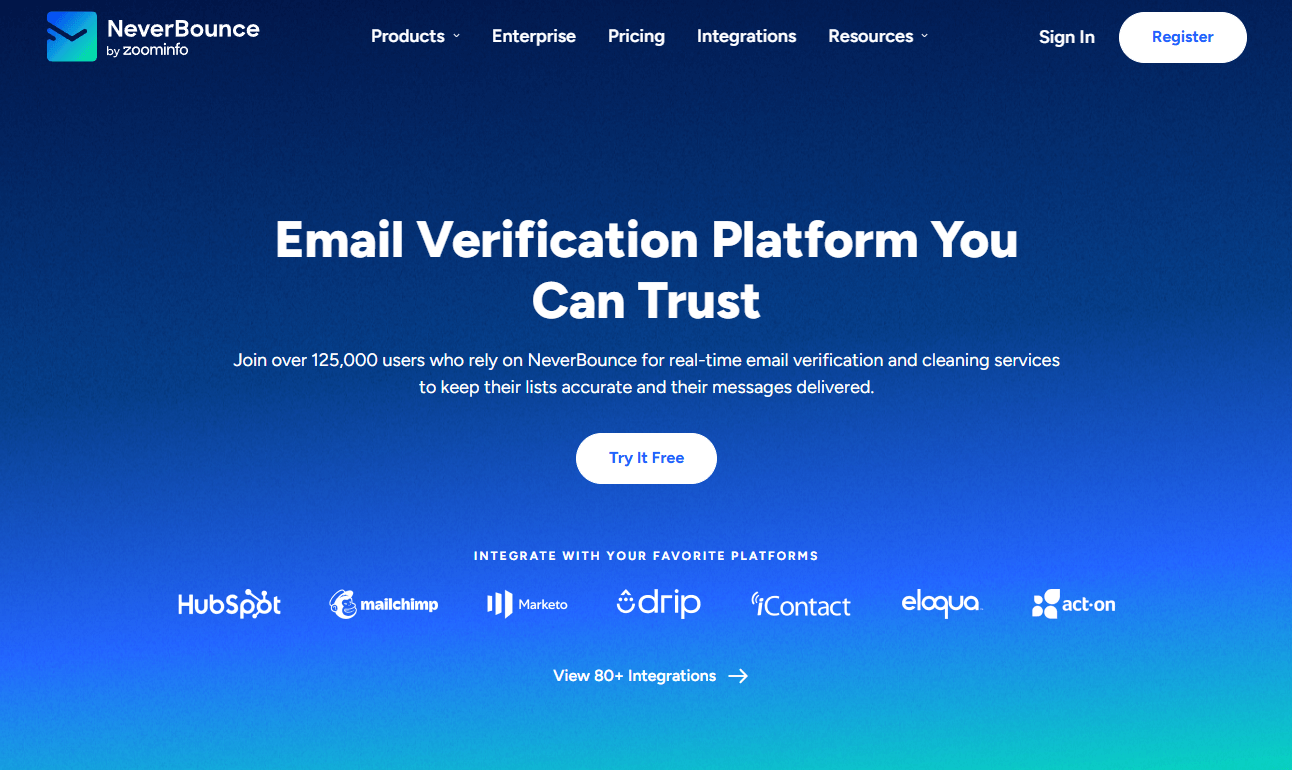
NeverBounce is now part of ZoomInfo, and it has an email verification toolkit that can suit both small businesses and large enterprises. The real-time verification API will be very useful for websites needing to validate email addresses instantly at the time of sign-up. It supports bulk cleaning of email lists so that your entire list is correct and updated.
NeverBounce boasts of great integration capabilities while boasting tools such as Salesforce and Mailchimp; it is said, though, to sometimes take a while to verify larger lists. Pricing can also tend to go overboard for really strict startup budgets. Regardless of such considerations, NeverBounce still stays up for the best and most suitable options for enterprises with high objectives of email deliverability.
5) Bouncify
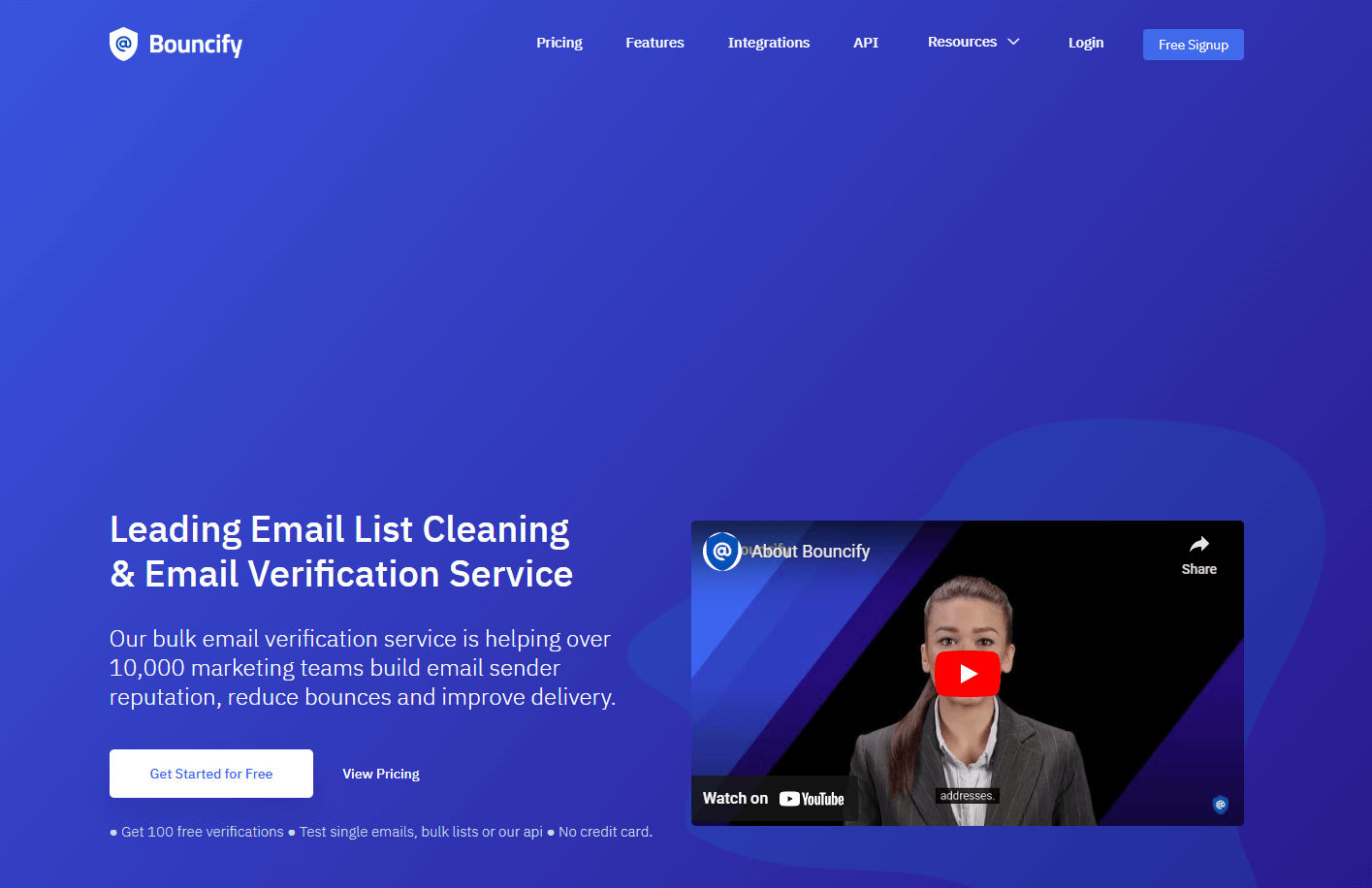
Bouncify offers users a very easy-to-use interface for seamless email verification, allowing drag-and-drop email lists right into the box for instant verification, a maximum of 250,000 addresses at any one time. This tool is GDPR-compliant, with your data handled and processed in total security according to international regulations.
On the other hand, one point in favour of Bouncify is that it gives much more detail on its eight-tier validation: It categorizes email addresses as safe, disposable, or even accept-all. The level of detail makes you understand the quality of your email list. However, in terms of the actual validation of more tricky types of email, such as role-based and greylisted emails, Bouncify lags behind, probably reflected in the results as a less reliable future for your email.
6) BriteVerify

BriteVerify remains a great choice for those businesses in search of simple ways to verify emails. It provides multi-level verification to ensure high accuracy levels, 98% as it claims, and does syntax checks, domain MX record verification, and disposable/role-based account detection.
While BriteVerify does a good job with its core features, there are a few more advanced ones it lacks, such as spam trap detection and gibberish checks. Its pricing is also on the higher side compared to other tools and thus out of the budget of smaller businesses. With this in mind, BriteVerify is a very reliable choice for anyone looking for accuracy and simplicity in their email verification process.
7) Mailfloss
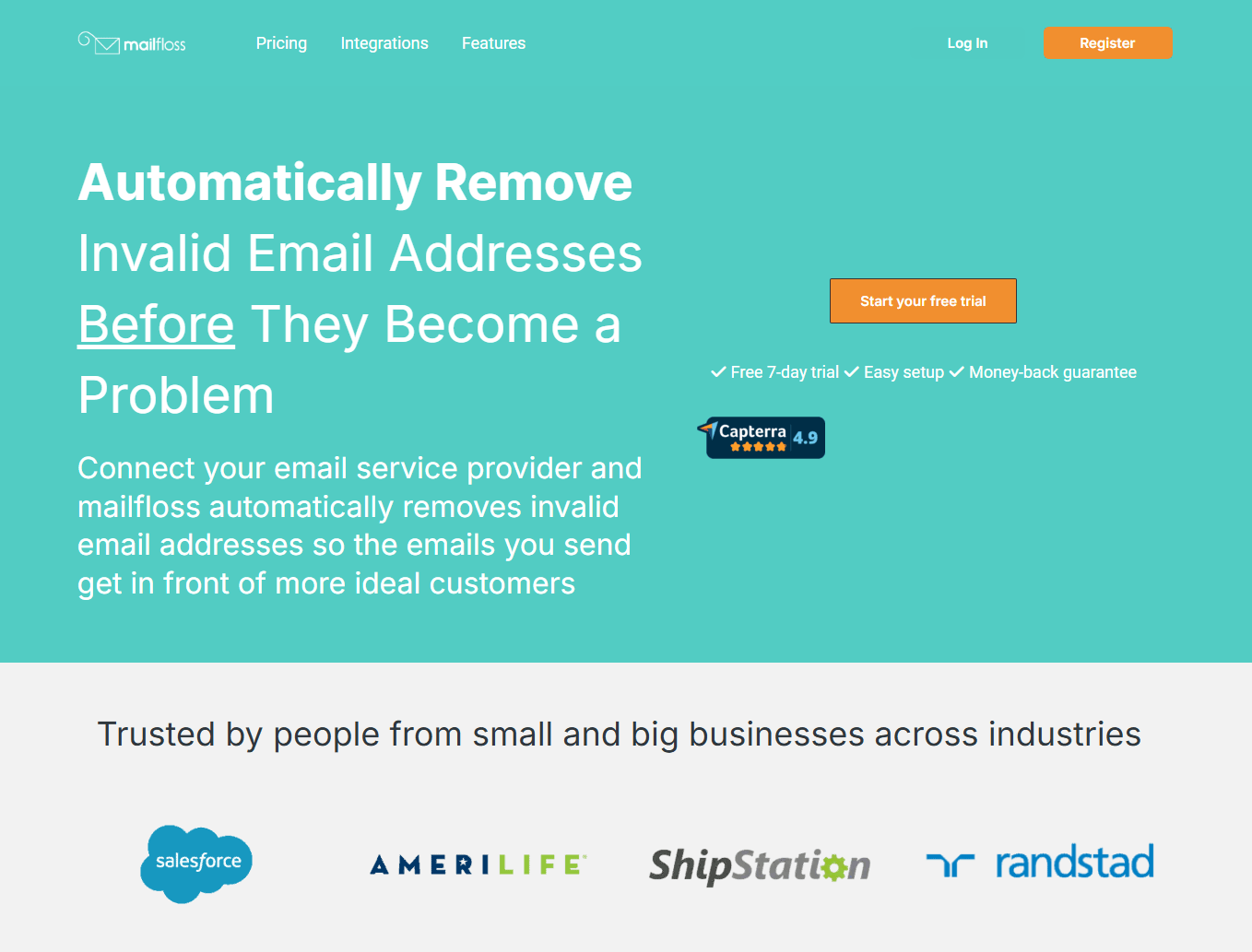
Mailfloss, on the other hand, leads the trend with its automated verification system that works all over the world. Its seamless integration with multiple platforms will provide super easy verification of e-mails with automatic cleaning of your email lists using interconnection to CRM, e-mail service provider, or any other assistant involved in daily work. Not only it could provide real-time verification, but it also shared some insights about the quality of your e-mail list, including domain whitelisting/blacklisting.
The 7-day free trial is very appealing for users to try the service before subscribing. However, Mailfloss does not publish its deliverability rates, making a comparison of the efficiency of this tool with others hard to make. It also lacks deep verification for many types of risky email addresses, which might be a disadvantage for users whose needs are more complex.
8) Emailable
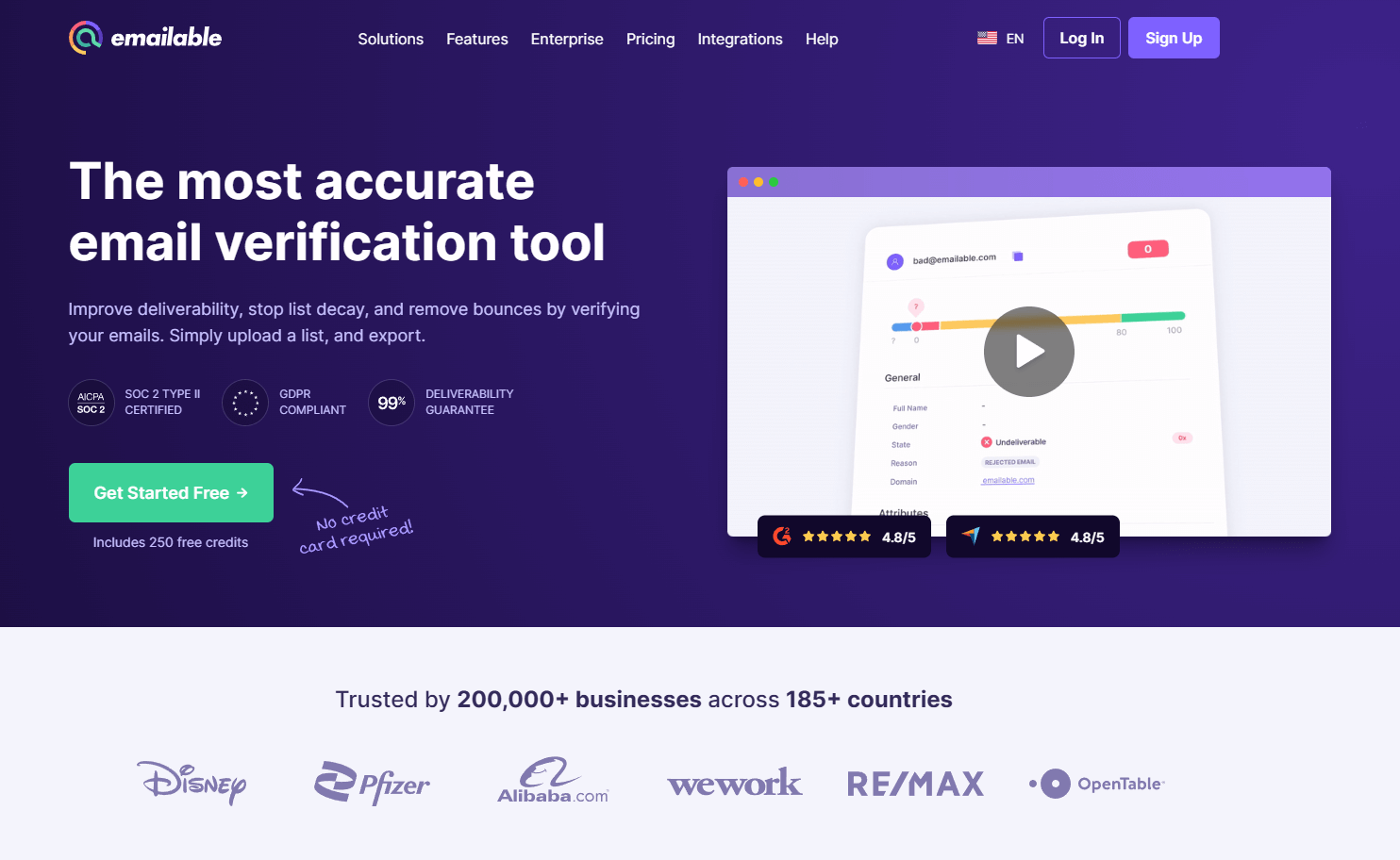
Emailable is a web-based email verification solution developed for fast performance and immediate processing. Being capable of serving a wide span of business needs through its bulk, API, widget, and integration options, Emailable goes the extra mile to verify things from domain checks, syntax checks, and greylisting to mail server validations.
One of the features that contribute to ease when using Emailable is that this platform assigns a quality score for each email address so you can focus your outreach in a well-prioritized manner. On the other hand, Emailable is not so advanced when it comes to finding spam traps and resolving catch-alls, hence decreasing its precision score. However, Emailable will be okay for companies that seek to quickly verify email addresses in an intuitive way.
2) What to Look For in an Email Verification Tool

Source: Software Suggest
Here are some key features to consider when selecting an email verification tool to ensure you make the best choice for your business needs:
- Accuracy: A high accuracy of validation will provide the right distinction between valid or invalid emails, reducing the chances of bounces while improving the sender's reputation.
- Real-time Verification: Real-time verification is, verification at the very instant an email address is typed in is an important feature for businesses relying on sign-up forms or lead generation.
- Bulk Validation: If you deal with large lists, the tool should be able to handle bulk verification without losing speed or accuracy.
- API and Integration: Seamlessly integrates with your existing CRM, ESP, and other marketing tools to make your workflow easier and more productive.
- Customer Support: Good customer support is always necessary for helping customers and fixing any problems that may arise as soon as possible.
You will be able to give priority to these features while selecting the right email verification tool that grows with you in business and supports your ever-evolving marketing strategies.
3) Why Email Verification Matters
Why You Need to Verify Your Email List - Avoid Bounces + Email Verification Tools
The first thing to keep in mind was explaining why verification at the email address level is imperative before dealing with some specific tool. Just imagine running a campaign for thousands and finding out afterward that most of them never see your message. It not only wastes money and time but also adversely affects the sender's reputation and makes reaching inboxes more difficult in the future.
Email verification tools reduce such risks by filtering out invalid, outdated, or risky email addresses. That means your emails will go to real and active users who are most likely to read and engage with your content. Moreover, having a clean email list boosts deliverability rates and minimizes the chance of your messages being considered spam.
In today's data-driven world, the integrity of lists is an asset, which has become more precarious than ever. With increased stringency in privacy regulations and users getting choosier regarding which emails deserve a place in their inbox, an efficient email verification tool has become inevitable for any successful emailing campaign. The increasingly important role of email verification in successful email marketing campaigns is considered below.
4) Does Google have an Email Verification Tool

Source: Google
Google does not provide a standalone email verification tool like third-party services do. However, Gmail has built-in features that help detect invalid or suspicious email addresses, such as bounce-back messages and security warnings. For businesses using Google Workspace, features like email filtering and spam detection improve email deliverability but do not serve as a full verification solution.
For a comprehensive list of email verification tools, check out this article from Mailtrap, which explores various options to ensure your emails reach valid recipients.
5) Conclusion
In the competitive world of email marketing, quality is the make-it or break-it factor of an email list. Spending money on a reliable email verification tool is something worth investing in to ensure your message reaches the proper audiences for better deliverability rates without harming your sender's reputation.
From well-established names like ZeroBounce and NeverBounce to pocket-friendly options like Selzy, there is something for every need and wallet. Consider the features that mean more to your business, such as accuracy, the ability to integrate, and customer support, so you can make an informed choice.
Remember, a clean email list is about avoiding bounces and building relationships with your audience. Take the time to select the right email verification tool, and your email marketing efforts will surely thrive.
At the heart of digital marketing, email marketing has remained very vital, but it only works based on one key area: your email list quality. Emailing invalid or outdated addresses wastes your resources and ruins your sender's reputation. That's where email verification tools help you make sure your campaigns are on target every time.
Among lots of email verification tools available, choosing the perfect one can be a tough task. Each has its share of unique features, pricing plans, and accuracy levels. Simple steps on your behalf may suffice, but in simplifying your decisions, here's an overall guide that matches a few of the top email verification tools, focusing on their strengths and weaknesses.
Be it a fresher in this email marketing domain or to improve your present system, the understanding of the above-mentioned will surely help in making an informed decision. Let's journey into the world of verification to find out some of the best choices that uplift your campaigning over emails.
If you're looking for comprehensive email marketing services, consider partnering with Profitworks Marketing. They offer expert solutions tailored to your needs, helping you optimize your email marketing campaigns for maximum impact and success.
- Details
- Email Marketing
- Hits: 805
Tips for Designing a High-Converting Email Signup Form For Your Countertop Company
Email marketing remains one of the most effective tools for engaging with your audience and increasing conversions. However, the success of an email campaign largely depends on the quality and volume of your subscriber base. A well-designed email signup form is vital to attracting new contacts and growing your business. Let's examine expert tips for creating a high-conversion form that will attract visitors' attention and motivate them to leave their contact details.
Click on each corresponding link to jump ahead:
- Minimalism and Focus on the Essentials
- Clear Indication of the Value of the Subscription
- Thoughtful Design and Layout
- Calls to Action (CTA)
- Transparency and Trust
- Optimization for Mobile Devices
- A/B Testing
- Social Proof
If you are looking for help with your countertop company, Contact Profitworks.
1) Minimalism and Focus on the Essentials

Source: Cambria
Simplicity and brevity are fundamental to creating an effective email signup form. Countertop companies can significantly improve completion rates by streamlining the process and eliminating unnecessary steps. Start by requesting only the most essential information—in most cases, this means just an email address. By focusing on what’s absolutely necessary, you reduce the likelihood of potential subscribers abandoning the form.
Additionally, ensure the form uses clear and concise field headers. For instance, straightforward labels like “Your Email” make the process intuitive and user-friendly. Avoid asking for optional details upfront; these can be gathered later during nurturing campaigns or customer interactions. Keeping the form short and removing barriers not only simplifies the user experience but also aligns with research showing that forms with fewer fields consistently achieve higher conversion rates.
2) Clear Indication of the Value of the Subscription
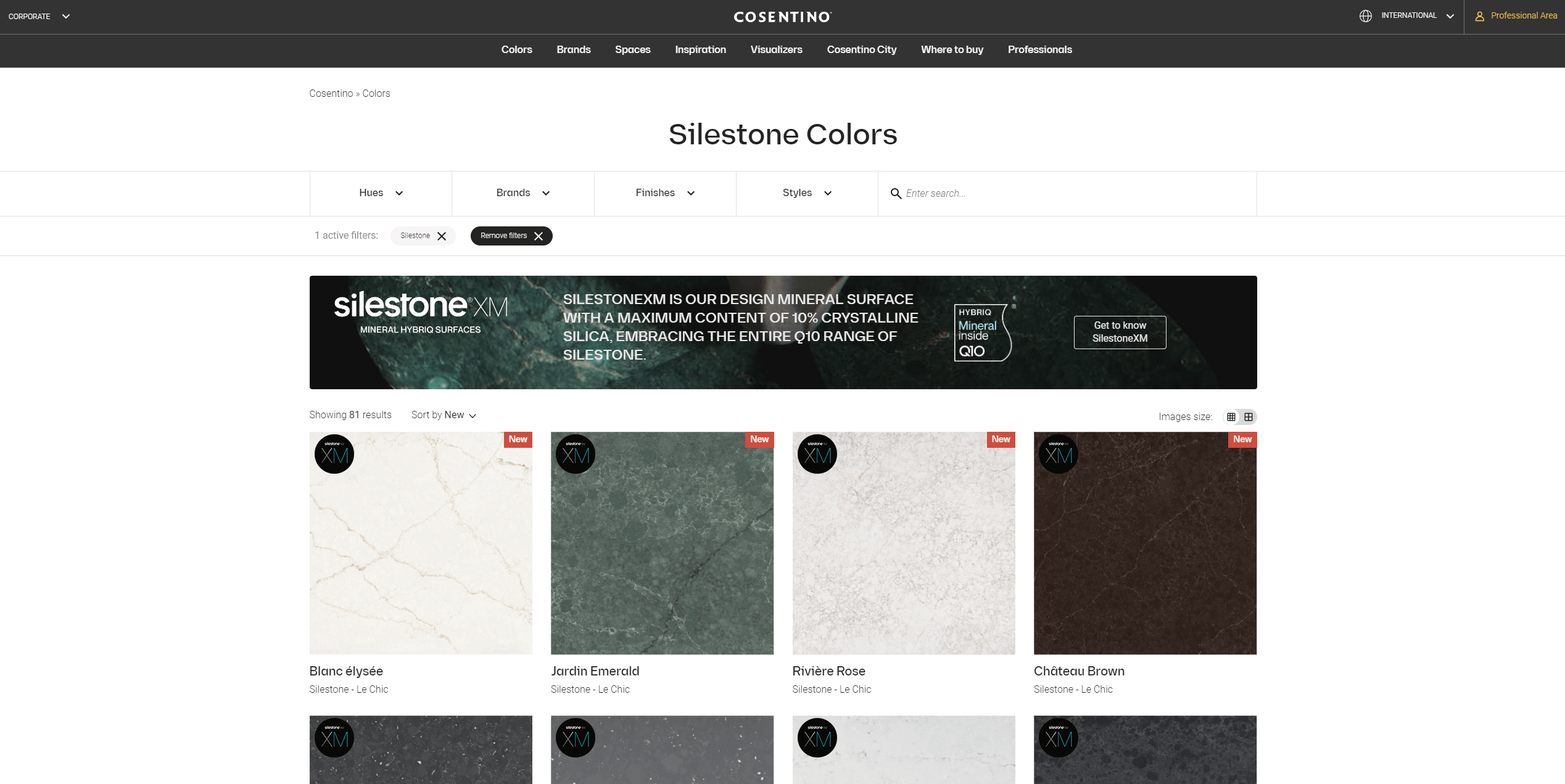
Source: Cosentino
People sign up when they see a direct benefit. For countertop companies, clearly communicating the value of your emails is crucial.
Highlight the Benefits
When designing your email signup form, emphasize the specific advantages your audience will receive. For instance, phrases like “Get exclusive countertop design tips” or “Access special discounts for your kitchen renovation” resonate well with potential subscribers. Make these benefits clear and concise so that users understand exactly what they’re signing up for.
Leverage Social Proof
Trust plays a vital role in convincing visitors to subscribe. Showcase testimonials or highlight the number of people who already trust your brand, such as “Join 10,000+ happy homeowners who receive our updates.” This reassures new subscribers that they are making a good choice.
-
Use measurable promises: Provide clear and actionable outcomes, such as “Save 15% on your first order.”
-
Showcase unique offers: If you’re providing a downloadable guide, coupon, or another special incentive, make sure to call it out directly on the form.
3) Thoughtful Design and Layout
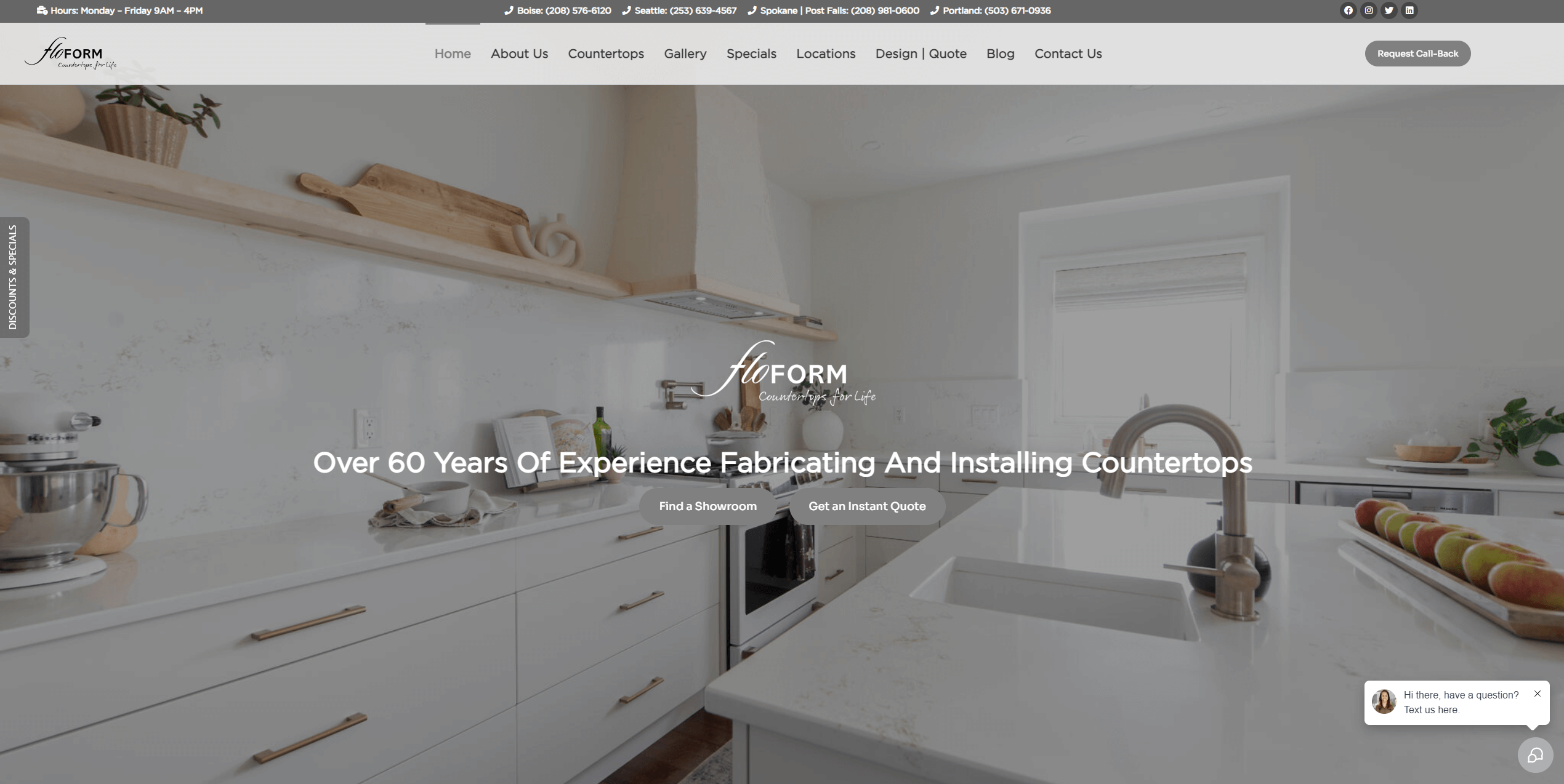
Source: Floform
An appealing, user-friendly design ensures that your form stands out and is easy to use. The design and layout of your email signup form are just as important as its content. A visually appealing form can capture attention and encourage more users to engage.
Use Contrasting Colors
Make your form pop by selecting colours that contrast with the rest of your website. A bold background or button colour can draw attention to the form, ensuring it doesn’t blend in with the surrounding content. For example, if your website predominantly uses neutral tones, consider a bright accent colour for the signup button to make it stand out.
Position Your Form Strategically
Where you place your signup form can significantly impact its visibility and effectiveness. Ideally, the form should be positioned above the fold on your homepage, ensuring that visitors see it without needing to scroll. Alternatively, placing the form in a prominent sidebar or using a timed pop-up can also capture attention effectively. Pop-ups, when timed appropriately, can draw focus without being intrusive.
-
Ensure responsiveness: As many users browse websites on mobile devices, your signup form must be optimized for seamless display on both mobile and desktop screens. Test the form to ensure it adjusts well to various screen sizes and remains easy to use on smaller devices.
With thoughtful design and strategic placement, your email signup form can effectively draw attention and encourage more users to join your list. A well-designed form speaks volumes about your brand’s professionalism and commitment to providing a positive user experience.
4) Calls to Action (CTA)
The call-to-action (CTA) button is a make-or-break element of your signup form. For countertop companies, crafting a compelling and visually striking CTA can significantly improve conversions by encouraging immediate action and drawing the user’s attention to the form’s ultimate purpose.
Use Action-Oriented Language
Strong, action-oriented verbs can make your CTA more compelling. Words like “Download,” “Get,” or “Join” prompt users to act right away. These verbs emphasize the benefit the user will receive and create a sense of direction. For instance, instead of a vague “Subscribe,” opt for something like “Get My Free Kitchen Design Guide,” which clearly outlines the value of signing up and personalizes the experience.
Create a Sense of Urgency
Adding an element of urgency can spur users to take action quickly. Phrases such as “Sign Up Today” or “Claim Your Exclusive Discount Now” can create a fear of missing out, motivating users to act immediately. Countertop companies offering limited-time deals or exclusive content should highlight these aspects prominently in their CTA.
Design for Visibility
The visual appeal of your CTA button plays a crucial role in its effectiveness. Use bold, contrasting colours to make the button stand out from the rest of the form and website. Ensure the button is large enough to grab attention but not so large that it feels overwhelming. The text on the button should also be easy to read, with sufficient whitespace around it to avoid clutter. Experimenting with shapes, borders, and shadow effects can add an extra layer of visual distinction.
A well-crafted CTA, combining effective wording and thoughtful design, ensures that potential subscribers feel both informed and motivated to engage with your email signup form.
5) Transparency and Trust
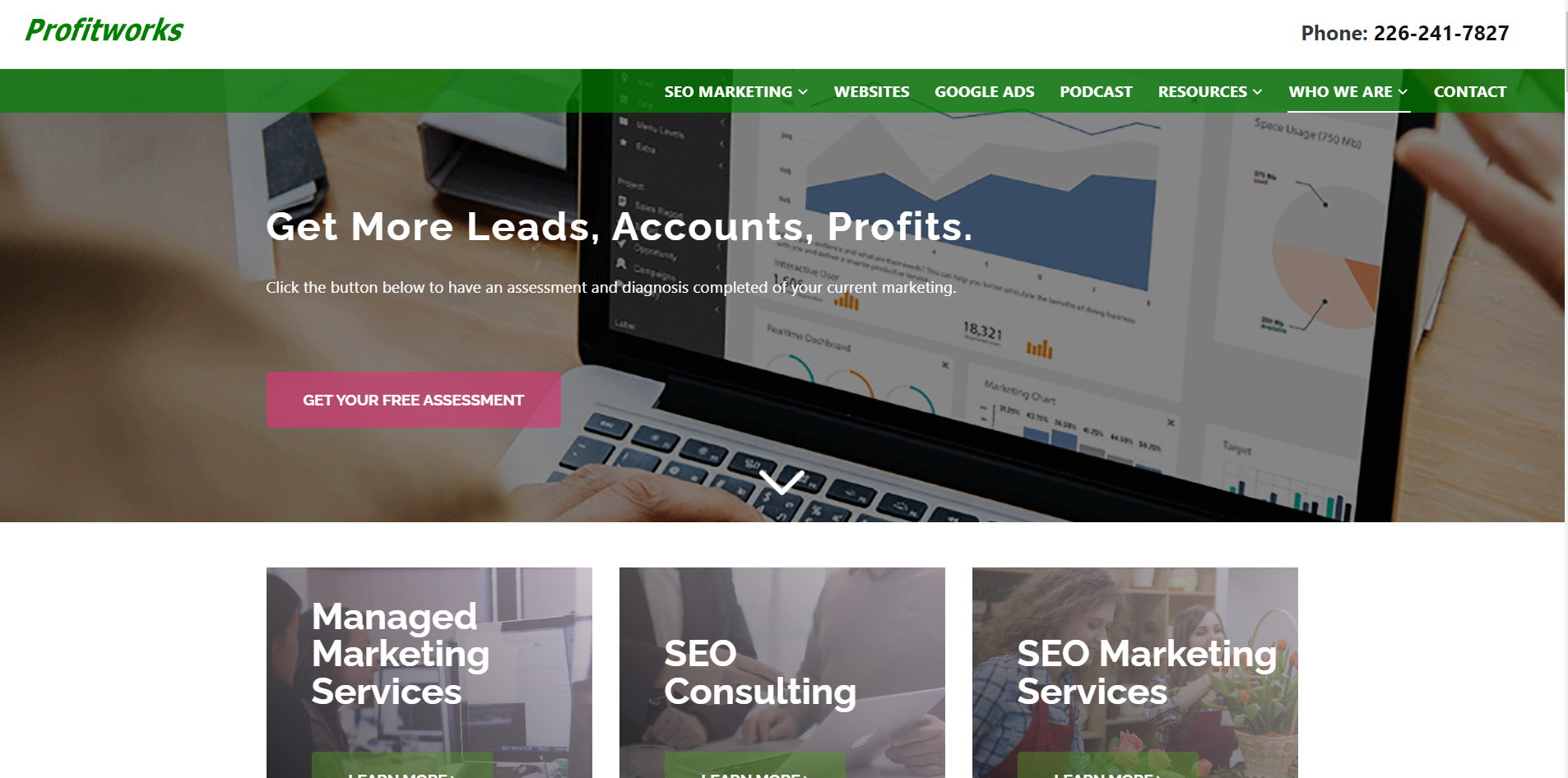
Source: Profitworks
Trust is critical in persuading users to share their information. For countertop companies, fostering transparency and reliability is essential to establishing confidence and encouraging signups. By addressing concerns and clearly outlining what users can expect, you can significantly improve your form’s effectiveness.
Display a Privacy Policy
A simple privacy statement can go a long way in reassuring potential subscribers. Include a brief note like, “We respect your privacy. No spam, ever,” to emphasize your commitment to safeguarding their information. Additionally, provide a link to your full privacy policy so users can review it in detail if desired. Being upfront about how their data will be used—and what they won’t receive—helps reduce hesitation.
Specify Email Frequency
Uncertainty about email frequency can deter potential subscribers. Clearly outline how often you’ll reach out, whether it’s “Monthly updates” or “Weekly deals.” This sets expectations and shows respect for their time and inboxes.
Provide Tailored Options
Empower users to customize their subscription preferences. Offer choices for the type of emails they’d like to receive, such as promotions, design tips, or event invitations. This not only improves user satisfaction but also increases the likelihood of engagement.
Add Credibility with Secure Practices
Show that your company is trustworthy by using a secure connection (SSL) and including clear contact details on your form. A secure connection icon, paired with an accessible way to reach your team, reassures users that they’re dealing with a legitimate business. Credibility is further strengthened when users see that their personal data is handled responsibly. Research shows that 46% of consumers are willing to pay more to trustworthy brands. Being transparent about your email newsletter can greatly increase user trust.
6) Optimization for Mobile Devices
With the growing number of users accessing websites via smartphones, it is crucial to ensure your email signup form is mobile-friendly. given the large share of mobile users a form that is not optimized for smaller screens can frustrate users and deter them from subscribing, leading to missed opportunities.
Design for Mobile Usability
Ensure that all input fields and buttons are large enough to be easily tappable on mobile devices. Users should not have to zoom in to click on a field or button. Additionally, pay attention to spacing between elements to prevent accidental clicks, which can frustrate users.
Enable Autocomplete and Keyboard Optimization
Streamline the signup process by enabling autocomplete features. This allows browsers to pre-fill fields like email addresses, saving time and reducing errors. Also, use appropriate keyboard types for different fields. For instance, displaying a numeric keypad for phone number fields improves usability.
Test Across Devices
Testing your form on various devices is vital to ensure it functions flawlessly. Check how it performs on both iOS and Android platforms, as well as across different screen sizes and orientations. Address any issues to provide a seamless experience for all users. A mobile-optimized form ensures you capture potential subscribers no matter how they access your site.
7) A/B Testing
To create the most effective email signup form, continuous testing is essential. Experiment with different elements to see what resonates best with your audience.
Test Individual Elements
Rather than overhauling the entire form, focus on testing one element at a time. For example, you can experiment with different headlines, CTA text, button colors, or form placements. This targeted approach makes it easier to pinpoint what changes drive improvements.
Analyze and Iterate
Use analytics tools to track the performance of each test. Compare metrics like conversion rates and engagement to identify the version that works best. Remember, trends and user preferences evolve over time, so regular testing ensures your signup form stays optimized and effective.
Keep Testing Fresh
Once you implement a winning version, start a new test. Continuous A/B testing allows you to refine your form over time, keeping it aligned with user expectations and industry best practices. With consistent effort, your form’s performance can continually improve, driving higher conversions.
8) Social Proof
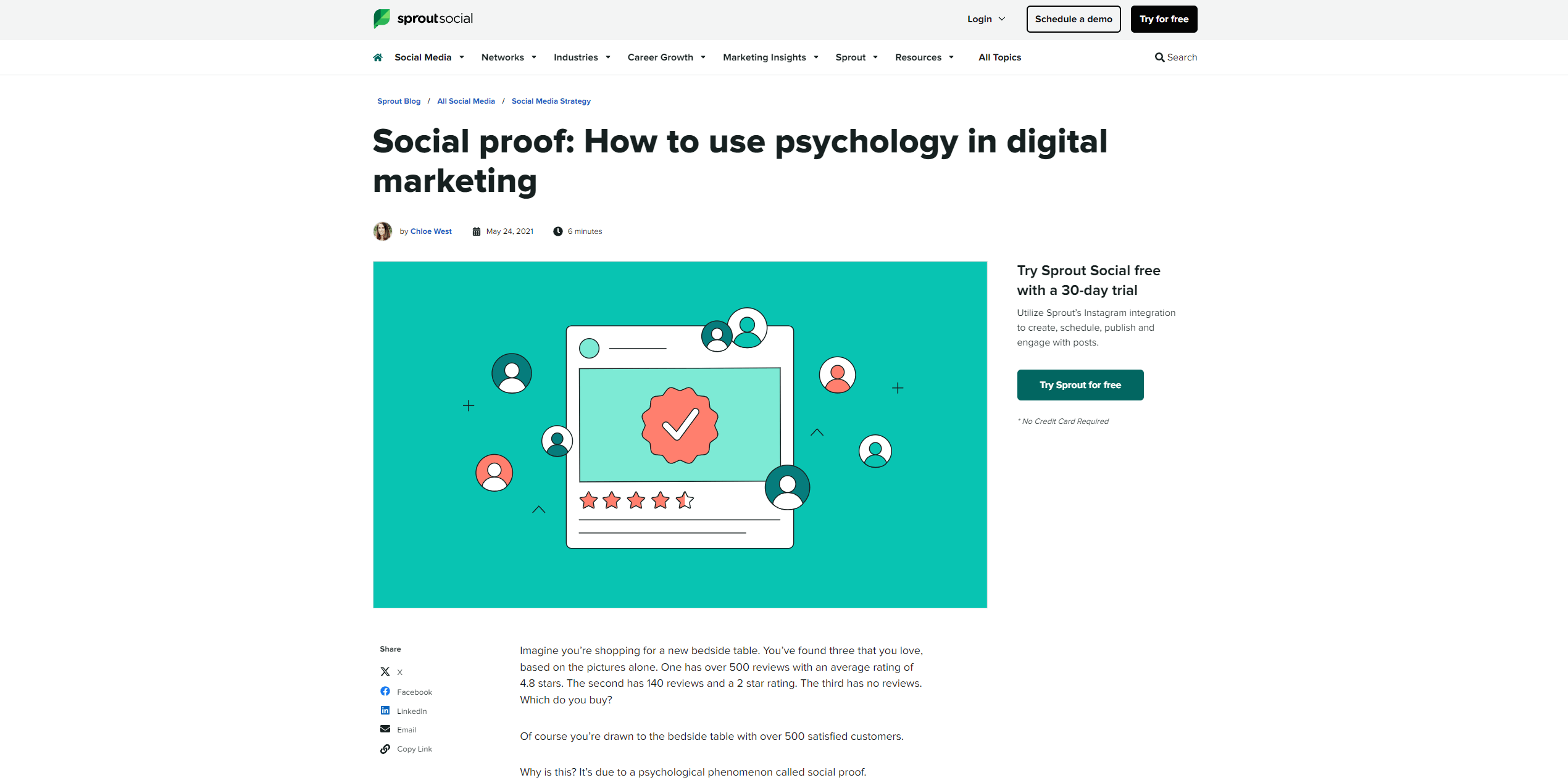
Source: Sproutsocial
Social proof is a powerful psychological phenomenon that drives people to trust the opinions and actions of others, especially when making decisions. Leveraging social proof elements in your subscription form can significantly boost its effectiveness by fostering trust and credibility.
Highlight Subscriber Numbers: If you’ve amassed a large audience, let potential subscribers know. For example, phrases like “Join 50,000+ readers who receive exclusive insights” create a sense of trust and belonging.
Incorporate Testimonials: Adding brief, positive testimonials from existing subscribers can help validate your value. A satisfied subscriber saying, “This newsletter transformed how I approach [your topic]” can reassure potential readers of your credibility.
Showcase Client and Partner Logos: If you work with recognized brands or organizations, their logos act as endorsements. Displaying logos like “Trusted by [Big Client Name]” conveys professionalism and reliability.
Feature Media Mentions: Being featured in reputable media outlets? Include their logos with phrases like “As seen in [Publication Name].” This positions your brand as credible and noteworthy.
Display Certifications and Awards: If you’ve received industry recognition, certifications, or awards, don’t shy away from showing them off. Accolades indicate expertise and elevate your authority.
Leverage Social Media Metrics: Highlight how your content performs on social platforms, such as “10,000+ shares on social media,” to demonstrate its popularity and value.
Integrating these elements strategically into your subscription form can transform it into a trust-building tool, helping convert visitors into loyal subscribers.
- Details
- Email Marketing
The number #1 way to unlock the secrets of email marketing for an HVAC company is to provide valuable, relevant, and personalized content that addresses the specific needs and interests of your subscribers. Emails are a big deal in business. They’re like your secret weapon for talking directly to your customers without the noise of social media. While platforms like Instagram and Twitter keep changing the rules, emails stay the same, letting you chat directly with people who are interested in what you have to offer. For any business, whether it’s just starting or already established, this kind of direct line can be a game-changer. It’s a solid base for building trust, sharing news, and even making sales.
Click on each corresponding link to jump ahead:
- The Power of Personal Touch
- Crafting Emails That Work
- Avoiding Common Pitfalls
- Harnessing Data for Smarter Campaigns
- Final Thoughts
For more information on how email marketing can benefit your HVAC company, Contact Us.
1) The Power of Personal Touch
In the realm of email marketing for HVAC companies, the power lies in its ability to establish a personal connection with the audience. What makes email marketing so compelling is its inherent flexibility. It allows you to tailor messages precisely to your liking and reach the right people with pinpoint accuracy. Whether you're unveiling a new product line or offering an exclusive behind-the-scenes look into your operations, email empowers you to convey your message in your own unique voice.
When you hit the mark with your emails, they have the potential to resonate deeply with your audience. They feel valued, heard, and more connected to your brand, which can be the tipping point in turning them from casual subscribers into devoted, repeat customers. This personal touch becomes the cornerstone of customer loyalty, setting you apart from competitors who may take a more generic approach.
One of the most effective strategies for leveraging the power of personalization is audience segmentation. By dividing your subscriber base into distinct groups based on factors like location, purchase history, or interests, you can ensure that each email resonates with its intended audience. This targeted approach maximizes the relevance and impact of your email campaigns, driving engagement, conversions, and ultimately, business growth.
In essence, the magic of email marketing for HVAC companies lies in its ability to forge meaningful connections with your audience through personalized, relevant content. By embracing this personal touch and leveraging it to its fullest potential, you can unlock the secrets to building lasting customer relationships and driving success in your business endeavours.
2) Crafting Emails That Work
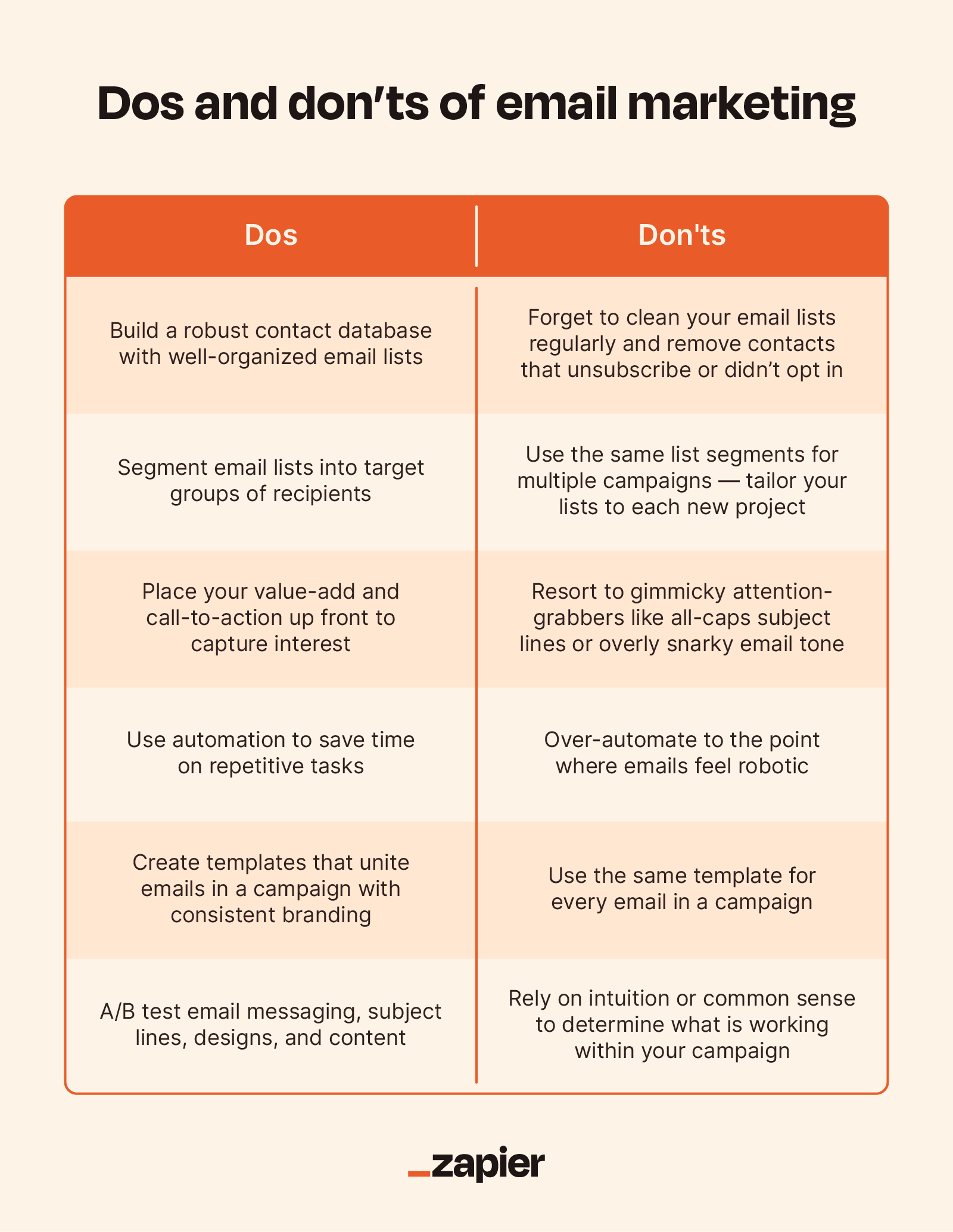
Source: Zapier
Getting the Basics Right:
Before delving into intricate strategies, mastering the fundamentals is paramount. This entails crafting a compelling subject line that captures attention, composing a message that's easily digestible, and ensuring your emails are visually appealing across all platforms, particularly mobile devices.
Remember, the effectiveness of an email hinges on its ability to garner opens. Thus, kickstart your email with an attention-grabbing subject line; akin to a headline in a newspaper, it entices recipients to explore further.
Maintain brevity and clarity in your content, utilizing headers and bullet points to enhance readability. Additionally, prioritize mobile optimization since a substantial portion of email users access their inboxes via smartphones. By adhering to these basic principles, you lay a strong foundation for impactful email marketing campaigns.
Personalization Pays Off:
Personalizing your emails can indeed wield significant influence, especially in the realm of HVAC companies. When recipients perceive an email as personally relevant, they're inherently more inclined to engage with its content. However, personalization extends beyond mere inclusion of a recipient's name; it encompasses tailoring content to align with their unique interests or prior interactions with your brand.
Consider this scenario: by dispatching a targeted offer on an HVAC system accessory they previously explored on your website, you demonstrate attentiveness to their preferences, thereby heightening the likelihood of conversion. This level of customization transcends basic demographic segmentation, delving into the realm of behavioral insights. Leveraging such data enables you to orchestrate messages that are not only timely but also profoundly pertinent.
This personalized approach yields manifold benefits for HVAC businesses. Beyond elevating open rates and click-throughs, it fosters enhanced customer satisfaction by furnishing a bespoke shopping experience. By deploying personalized email campaigns, HVAC companies can forge stronger connections with their audience, driving engagement and fostering brand loyalty in the process.
3) Avoiding Common Pitfalls
The Risk of Overdoing It:
In the realm of email marketing for HVAC companies, there's a fine line between maintaining active communication and inundating subscribers with excessive emails. While regular engagement is vital, an onslaught of messages risks alienating your audience, prompting them to either ignore your communications or opt-out altogether.
Achieving the right balance entails delivering emails that offer genuine value, whether it's through informative content, entertaining anecdotes, or exclusive promotions. By adhering to a consistent sending schedule, you can effectively manage subscriber expectations while ensuring your brand remains at the forefront of their minds. This approach cultivates a sense of anticipation and reliability, strengthening the bond between your company and its audience.
Ultimately, success lies in striking that delicate equilibrium—providing sufficient content to remain relevant without overwhelming recipients. By treading carefully and prioritizing quality over quantity, HVAC companies can navigate the email marketing landscape adeptly, fostering lasting engagement and bolstering brand loyalty along the way.
Staying on the Right Side of Spam:
In the realm of email marketing for HVAC companies, a critical consideration is ensuring your messages steer clear of the dreaded spam folder. This necessitates a comprehensive understanding of email regulations, particularly those outlined in the CAN-SPAM Act in the United States.
Adhering to these regulations isn't just a matter of legality; it's also integral to safeguarding your business's reputation and fostering trust with customers. Implementing clear opt-in procedures and providing easy unsubscribe options not only fulfill legal obligations but also signal to subscribers that their preferences and privacy are respected.
This commitment to transparency and compliance not only mitigates the risk of your emails being flagged as spam but also cultivates a sense of trust and engagement among recipients. By prioritizing ethical email practices, HVAC companies can uphold their integrity while maximizing the effectiveness of their marketing efforts.
4) Harnessing Data for Smarter Campaigns
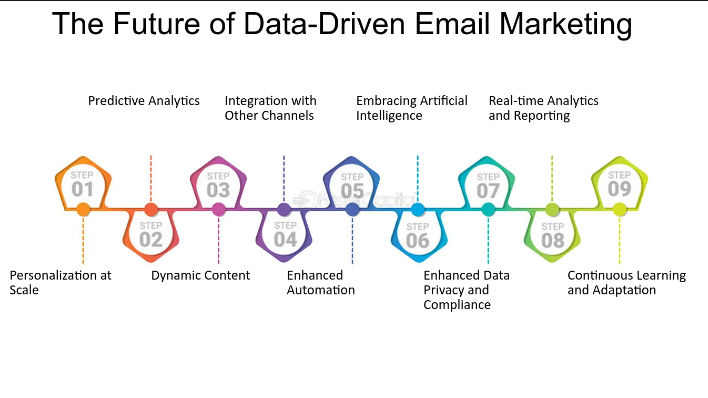
Source: Faster Capital
In the ever-evolving landscape of email marketing, leveraging data effectively stands as a cornerstone for refining strategies and achieving superior outcomes. By delving deep into metrics such as open rates, click-through rates, and conversion data, you gain invaluable insights into the performance of your campaigns.
This meticulous analysis empowers you to adapt and optimize your strategies in real time, ensuring that your messages resonate with your audience on a profound level. For example, if your data analysis indicates that emails sent on Tuesday mornings yield significantly higher open rates compared to those dispatched on Fridays, you can strategically adjust your scheduling to capitalize on this peak engagement period.
Moreover, segmenting your audience based on their behaviour, preferences, and past interactions with your brand allows for even greater customization of your communications. By tailoring content and offers to align closely with the unique needs and interests of each segment, you enhance relevance and drive deeper engagement.
By implementing a data-driven approach to email marketing, you not only refine your strategies but also unlock the potential to deliver more impactful and personalized experiences for your subscribers. This, in turn, cultivates stronger connections with your audience and drives enhanced performance for your email campaigns, ultimately propelling the success of your business in the digital realm.
5) Final Thoughts
In the ever-evolving landscape of digital marketing, email remains a stalwart tool for forging meaningful connections with customers and driving business growth. Its unparalleled power lies in its ability to facilitate personal connections and foster direct communication between brands and their audience.
For students and aspiring entrepreneurs, mastering the intricacies of email marketing can prove to be a pivotal asset in gaining a competitive edge in the bustling digital marketplace. Beyond the mere act of sending emails, success in this realm hinges on the art of crafting each message with care and precision, with the overarching goal of nurturing enduring relationships with subscribers.
Remember, effective email marketing transcends mere transactional exchanges; it's about cultivating trust, delivering value, and building relationships that endure. By approaching each email campaign with thoughtfulness and integrity, while consistently providing value to your audience, you'll transform your email marketing endeavors into a potent asset for your business's success.
For more help with starting your own email marketing campaign, contact Profitworks.
- Details
- Email Marketing
- Hits: 726
Email Hosting 101: Everything You Need to Know For Your HVAC Business
The #1 tip for HVAC email hosting is to choose an email hosting provider that prioritizes security features like encryption and multi-factor authentication, paired with reliable uptime and 24/7 support, to ensure seamless and secure communication for your HVAC business. Effective email hosting is a foundational element for any HVAC business aiming to maintain seamless communication and operational efficiency. By carefully selecting a provider that offers secure, feature-rich, and scalable solutions, you can ensure that your business stays connected and responsive to client needs. Integrating your email system with other tools, prioritizing security, and managing costs wisely will further enhance the value of your email hosting service. With reliable customer support and productivity-enhancing tools, your HVAC business can thrive in a competitive market, delivering exceptional service and building strong client relationships through efficient communication.
Click on each corresponding link to jump ahead:
- Choosing the Right Email Hosting Provider
- Features to Look for in Email Hosting
- Scalability and Flexibility
- Integration with Other Tools
- Security Measures
- Cost Considerations
- Customer Support and Reliability
- Managing Email Accounts for Your Team
- Enhancing Productivity with Email Tools
- What Email Host Is Best for an HVAC Company
- What Is Meant by the Tern Email Hosting
- What Is the Difference Between Email Hosting and Domain Hosting
- What Is the Difference Between Email Hosting and an Email Marketing Platform
If you are looking for help in choosing an email host for your HVAC company, contact Profitworks.
1) Choosing the Right Email Hosting Provider

Source: Google Workspace
Selecting an appropriate email hosting provider is the first step in establishing a robust communication system for your HVAC business. The provider you choose should align with your business size, budget, and specific requirements. Look for providers that offer secure email hosting solutions, ensuring that your communications are protected against unauthorized access and cyber threats. Evaluate the reputation of the provider by reading reviews and considering their track record in the industry. Assess their uptime guarantees to ensure your email service remains accessible when you need it most.
2) Features to Look for in Email Hosting

Source: Zoho Mail
When choosing an email hosting service for your HVAC company, focus on features that align with the demands of your business operations. Ample storage space is critical for handling large attachments such as service reports, maintenance agreements, and high-resolution photos of installations or repairs. Robust spam and malware protection is equally important to ensure your communications remain secure, protecting sensitive customer data and internal discussions from cyber threats.
For HVAC businesses that juggle multiple service calls and projects daily, advanced search capabilities are invaluable. They allow you to quickly locate important emails, whether you're tracking down a customer's request or reviewing supplier communications. Features like customizable filters and folders can help you keep your inbox organized, making it easier to prioritize urgent matters such as emergency service requests.
Integration with calendaring and task management tools can further enhance productivity by streamlining scheduling and team coordination. For instance, syncing your email with a shared calendar can help dispatchers efficiently allocate service technicians and keep everyone on the same page. Similarly, task management tools integrated into your email platform can simplify tracking job progress, ensuring timely completion of HVAC installations and repairs.
By prioritizing these features, your email hosting provider can become a critical tool in managing the complex communication needs of your HVAC company, helping to improve efficiency and customer satisfaction.
3) Scalability and Flexibility
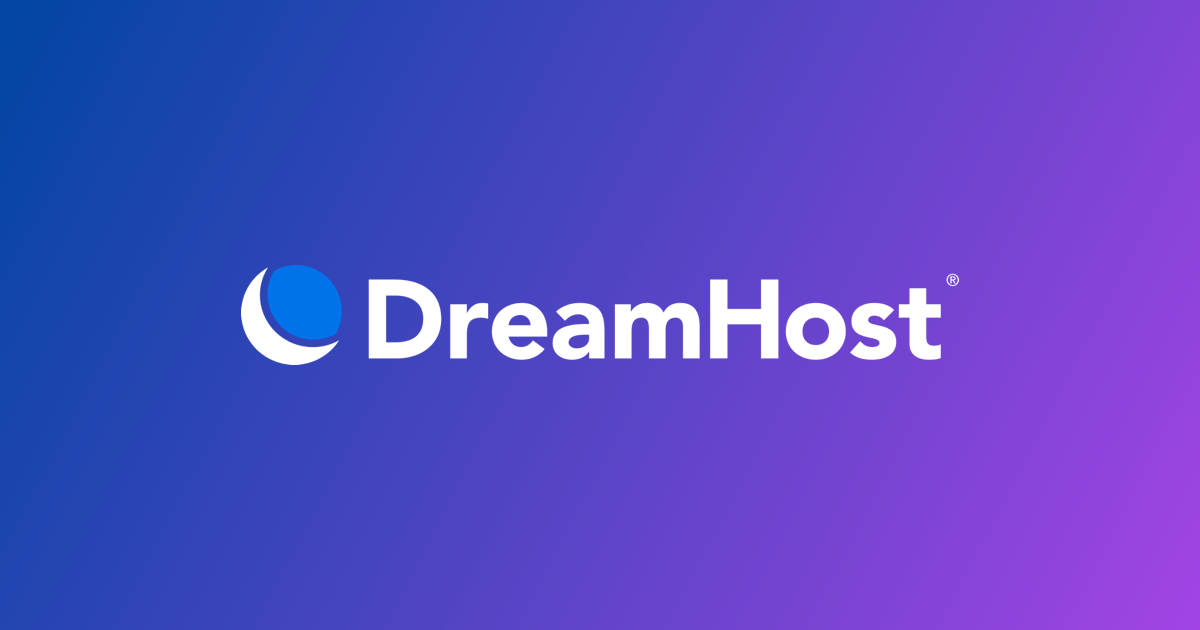
Source: Dreamhost
As your HVAC business grows, your email hosting needs will likely change. Selecting a provider with scalability ensures your communication system can grow with you, accommodating an increasing number of technicians, office staff, and service locations. Look for providers offering flexible plans that make it easy to add or remove users as your team expands or shifts, minimizing disruptions to your operations.
If your business operates under multiple brands or offers distinct services, check whether the provider supports multiple domains, allowing you to maintain professional email addresses for each segment of your business. This can help streamline communication and reinforce your branding across different service lines, such as residential HVAC, commercial systems, or energy efficiency consultations.
Flexibility is equally vital for a field-intensive industry like HVAC. Choose a provider that ensures seamless access to emails across various devices, including smartphones, tablets, and laptops. This feature enables your team to stay connected whether they're in the office scheduling appointments, on a job site responding to customer inquiries, or working remotely on project management tasks. Reliable mobile access ensures that your technicians and staff can quickly address customer needs and coordinate effectively, regardless of location.
By prioritizing scalability and flexibility, your email hosting solution will not only meet your current needs but also support your HVAC business as it evolves, keeping communication smooth and efficient at every stage of growth.
4) Integration with Other Tools
Efficient operations in the HVAC industry rely on the seamless integration of tools and software to streamline processes and improve productivity. Your email hosting service should work seamlessly with the applications you already use, such as customer relationship management (CRM) systems, scheduling software, accounting tools, and any platforms supporting your HVAC marketing strategy.
Integration with a CRM system, for example, allows your team to track customer interactions directly from email, ensuring personalized service and quicker responses to inquiries. Connecting your email with scheduling software can simplify booking and dispatching technicians, ensuring efficient route planning and reduced downtime.
For HVAC businesses, integrating project management tools with your email system is particularly valuable. This setup enables you to easily track service requests, manage work orders, and coordinate job schedules. Technicians can receive updates or customer details directly in their inboxes, while office staff can monitor job progress and update records without switching between platforms.
Additionally, linking your email to accounting tools can facilitate smoother invoicing and payment tracking, reducing administrative burdens. For marketing efforts, integration with email marketing platforms supports targeted campaigns, helping you nurture leads, promote seasonal services, and build customer loyalty.
By ensuring your email hosting provider supports these integrations, you create a connected ecosystem that minimizes manual data entry, reduces errors, and improves communication, making your HVAC business more efficient and customer-focused.
5) Security Measures
A reputable email hosting provider is essential for protecting your HVAC business communications. Security measures like encryption of emails in transit and at rest ensure that sensitive customer and business information—such as service agreements, invoices, and scheduling details—remains secure from cyber threats. Multi-factor authentication (MFA) prevents unauthorized access, adding an extra layer of protection for your team’s accounts.
HVAC companies handle critical customer data, making regular security audits vital to identify vulnerabilities before they become issues. Providers offering data backup and recovery options can safeguard your emails from accidental deletion or cyberattacks, ensuring continuity in your operations. For added peace of mind, select an email hosting provider that complies with industry security standards and has a strong reputation for protecting client data.
6) Cost Considerations
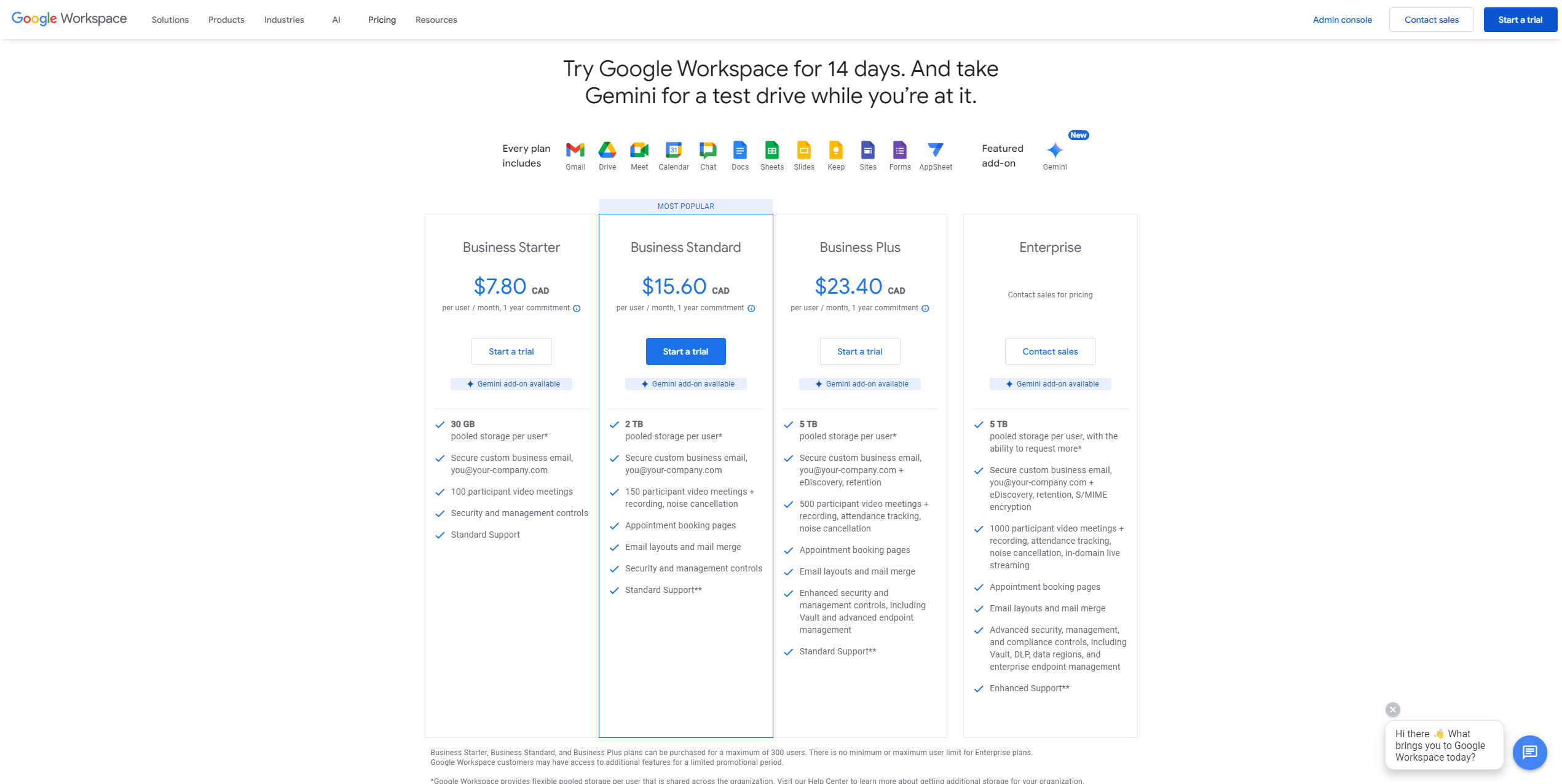
Source: Google Workspace
Budget plays a key role in selecting an email hosting service for your HVAC business, but it’s important to evaluate the cost in relation to the features, reliability, and scalability offered. For example, tiered plans allow smaller HVAC companies to start with basic services and upgrade as they grow, while larger operations may require plans with more storage, advanced security, or integration with dispatch and CRM tools.
Keep in mind hidden fees for services like extra storage, priority customer support, or premium security features. While cheaper plans may seem appealing, investing in a high-quality email hosting service often pays off by improving productivity, minimizing downtime, and safeguarding your business’s reputation. Ultimately, the right email hosting service should deliver reliable performance and scalability, aligning with the specific demands of the HVAC industry.
7) Customer Support and Reliability
Reliable customer support is essential for HVAC companies that depend on consistent email communication for scheduling, invoicing, and customer service. Choose an email hosting provider offering 24/7 support via phone, email, and live chat. HVAC businesses often operate outside traditional hours, especially during emergencies, making around-the-clock support crucial for resolving technical issues quickly.
Evaluate the provider’s uptime guarantees—look for at least 99.9% uptime to ensure uninterrupted email service. Infrastructure robustness, including redundant data centers and disaster recovery plans, adds another layer of reliability. Responsive and knowledgeable support teams can minimize disruptions, helping your HVAC company maintain smooth operations during even the busiest seasons.
8) Managing Email Accounts for Your Team
Organized email management is key to effective communication in an HVAC business. Establish a professional and standardized email structure, such as This email address is being protected from spambots. You need JavaScript enabled to view it., to ensure clarity and consistency for customers and partners. Create role-based accounts like This email address is being protected from spambots. You need JavaScript enabled to view it. or This email address is being protected from spambots. You need JavaScript enabled to view it. to direct inquiries to the appropriate departments, streamlining internal workflows.
To enhance security and organization, implement email usage policies covering password management, acceptable use, and data storage guidelines. Regularly updating these policies helps address evolving cybersecurity threats. Providing training for your team on email best practices, such as avoiding phishing scams and using email tools effectively, can reduce errors and strengthen your overall communication strategy.
9) Enhancing Productivity with Email Tools
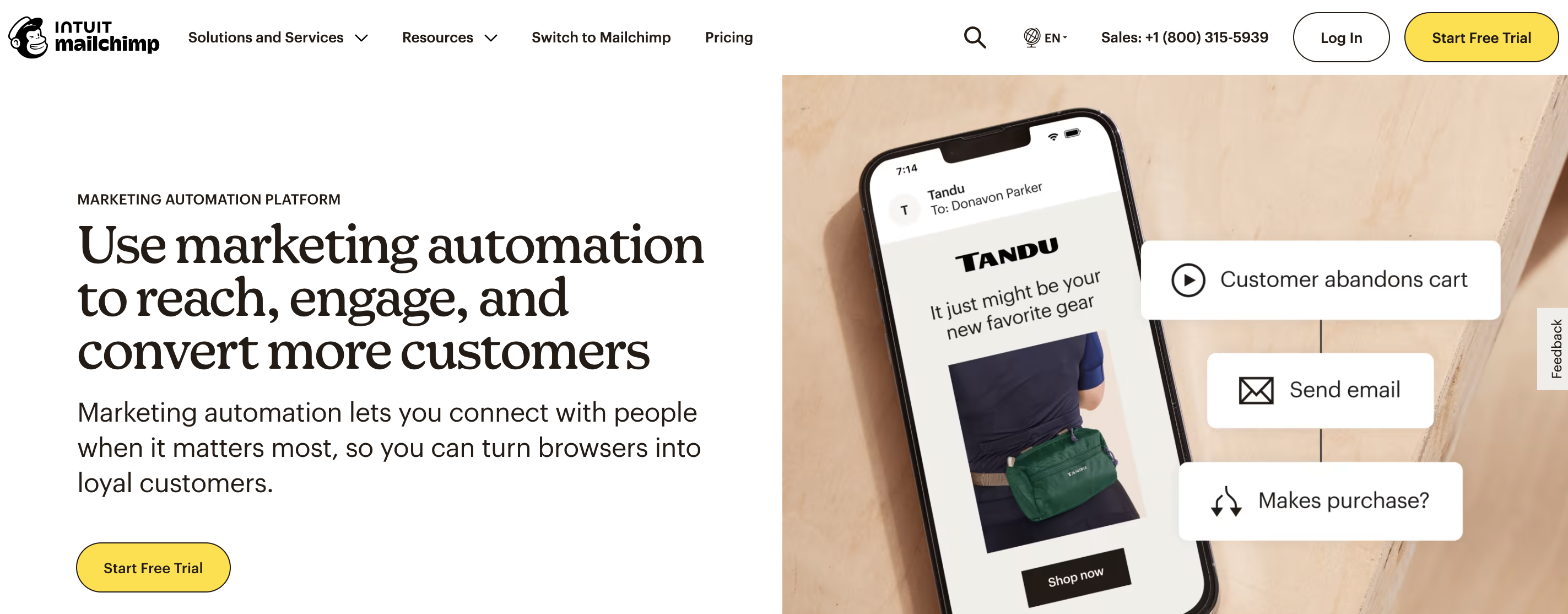
Source: Mailchimp
Email hosting services often come with productivity-enhancing tools tailored to streamline HVAC workflows. Shared calendars and task lists improve team coordination, while collaborative document editing ensures seamless communication across projects. For example, technicians can update job progress or attach photos directly to emails, keeping dispatchers and office staff in the loop.
Automated responses and scheduling features save time by ensuring that customer inquiries are promptly acknowledged, even during peak seasons. Mobile device integration allows technicians and managers to access important information while on the go, helping them stay connected to schedules, job updates, and client details.
Leverage email analytics and reporting tools to gain insights into team performance and communication patterns. Metrics like response times and email volumes can highlight areas for improvement, allowing your HVAC business to refine workflows and enhance customer satisfaction.
10) What Email Host Is Best for an HVAC Company

Source: Microsoft 365
Choosing the best email host for your HVAC business depends on your specific needs, including security, scalability, and integration capabilities. Industry-leading providers like Google Workspace, Microsoft 365, and Zoho Mail are popular choices due to their robust features and reliability. Google Workspace offers user-friendly tools, excellent mobile access, and seamless integration with other Google services, while Microsoft 365 provides powerful productivity tools like Outlook and Teams. Zoho Mail is ideal for smaller HVAC companies looking for budget-friendly options with essential features.
When selecting a host, prioritize security features like spam filters and encryption to protect sensitive customer data. Look for scalability to ensure the system can grow as your team expands. Finally, ensure the provider supports integration with tools critical to your operations, such as scheduling software or CRM systems, to streamline workflows and enhance communication across your team.
11) What Is Meant by the Tern Email Hosting
Email hosting refers to a service that manages and stores your email communications on a dedicated server, allowing your HVAC business to use a professional, custom email address (e.g., This email address is being protected from spambots. You need JavaScript enabled to view it.). Unlike free email providers, email hosting ensures a higher level of reliability, security, and customization, which are essential for businesses managing sensitive customer communications and large volumes of emails.
Email hosting services often include features like advanced spam filtering, secure encryption, and robust storage options, making them a valuable asset for HVAC companies. These services also enhance your professional image by ensuring your email address aligns with your brand, building trust with customers and partners.
12) What Is the Difference Between Email Hosting and Domain Hosting
Email hosting and domain hosting serve different purposes, though they can be related. Domain hosting is the service that manages your website's domain name (e.g., www.yourhvaccompany.com) and connects it to your website's files, making your site accessible on the internet.
Email hosting, on the other hand, specifically manages email accounts associated with your domain name (e.g., This email address is being protected from spambots. You need JavaScript enabled to view it.). While some providers offer both services in a single package, they are distinct. Email hosting focuses on secure and efficient email communication, whereas domain hosting ensures your website is live and functional.
For HVAC businesses, using email hosting linked to your domain hosting creates a cohesive and professional online presence, boosting credibility with customers.
13) What Is the Difference Between Email Hosting and an Email Marketing Platform
Email hosting is a service designed for regular communication, such as sending and receiving emails, managing team correspondence, and storing business-related messages. It provides features like secure inboxes, storage, and integration with scheduling and CRM tools.
An email marketing platform, like Mailchimp or Constant Contact, is specifically built for mass email campaigns. These platforms are ideal for HVAC businesses looking to run promotional campaigns, send newsletters, or engage in lead nurturing. They include tools for creating visually appealing emails, segmenting your audience, and tracking campaign performance.
While email hosting is essential for day-to-day operations and team communications, an email marketing platform is a strategic tool for customer engagement and growing your HVAC business through targeted outreach. Many companies use both services in tandem to meet their operational and marketing needs effectively.
- Details
- Email Marketing

Although some people consider emails outdated, email marketing has stood the test of time. Furthermore, it has proved to be extremely adaptable, managing to implement new advancements in tech and marketing. If you're looking to supercharge your email campaigns and boost conversions, you've come to the right place.
Today, we're diving into the exciting world of behavioural targeting in email marketing and exploring how it can transform your strategy into a conversion-generating machine.
Click on each corresponding link to jump ahead:
- Understanding Behavioural Targeting in Email Marketing
- Best Practices for Behavioral Targeting in Email Marketing
- How to Segment Your Audience
- How to Create Personalized Email Campaigns
- The Most Common Email Marketing Strategies
- Final Thoughts
For assistance with your email marketing campaign, contact the professionals at Profitworks.
1. Understanding Behavioral Targeting in Email Marketing
Once you've unlocked the secrets of behavioural targeting in email marketing, you can use these tips to boost your advertising efforts. By harnessing the power of customer behaviour data, you can create highly personalized and engaging email campaigns that leave a lasting impression on your subscribers.
Remember, it's all about delivering the right message to the right person at the right time. Once you are armed with this knowledge, you can conquer the world of email marketing with the might of behavioural targeting. Watch your engagement rates soar, and your conversions skyrocket!
Before we jump into the nitty-gritty, let's define what behavioural targeting in email marketing means. In a nutshell, it's all about using customer behaviour data to personalize your email campaigns. You can craft highly targeted and relevant content that resonates with your subscribers by tracking and analyzing actions like:
- Website browsing behaviour,
- Purchase history, and
- Email engagement metrics.
When it comes to email marketing campaigns you should also consider the best time to send marketing emails. That is particularly true for time-sensitive campaigns or products that impact the everyday lives of your customers.

Your subscribers will be happy to receive personalized messages - Photo by Andrea Piacquadio on Pexels
Now, let’s consider the best practices for behavioural targeting in email marketing.
2. Best Practices for Behavioral Targeting in Email Marketing
As with any marketing strategy, following best practices is important to ensure success. Consider the following best practices for behavioural targeting in email marketing:
- Obtain explicit consent: Ensure that you have obtained explicit permission from subscribers to collect and use their personal data for targeted marketing purposes. This can be done through opt-in forms or checkboxes during the sign-up process.
- Transparent privacy policy: Clearly communicate your data collection and usage practices in a privacy policy. Make it easily accessible and understandable to subscribers, outlining how their data will be used and protected.
- Provide opt-out options: Allow subscribers to easily opt out of behavioural targeting or modify their preferences at any time. Provide clear instructions and visible unsubscribe links in every email.
- Preference center: Create a preference center where subscribers can control their data and communication preferences. Allow them to choose the types of emails they want to receive, the frequency, and the topics they are interested in.
- Respect frequency and timing: Avoid bombarding subscribers with too many emails or sending them at inconvenient times. Use behavioural data to determine the optimal frequency and timing for sending targeted emails.
- A/B testing and data analysis: Continuously refine and optimize your email campaigns by conducting A/B tests to identify what resonates best with your subscribers. Analyze data insights to understand which strategies, content, and targeting methods yield the best results.
- Monitor and analyze results: Track and analyze the performance of your behavioural targeting campaigns. Monitor key metrics such as open rates, click-through rates, conversions, and revenue generated. Use the insights gained to refine and improve your targeting strategies.
- Use automation and segmentation: Leverage marketing automation tools and segment your email list based on subscriber behaviour, interests, or demographics. Send targeted emails to specific segments, delivering relevant content to improve engagement. The digital marketing experts from Movers Development suggest implementing automation in every facet of your company to streamline mundane, time-consuming tasks.
Email marketing is ever-evolving, so keep experimenting and adapting to stay ahead! Now, let’s consider how to actually segment your audience in email marketing.
3. How to Segment Your Audience
Segmentation is the name of the game for effective email marketing, and behavioural targeting takes it to a new level. With behavioural targeting, you can slice and dice your subscriber list into specific groups based on their:
- Actions,
- Preferences, and
- Interests.
In return, this allows you to create highly targeted and personalized email campaigns that resonate with each segment. Rather than sending a generic email to your entire subscriber base, segmentation allows you to deliver more personalized and relevant content to different segments. For instance, you might have segments like:
- Frequent buyers,
- Inactive subscribers, or
- New customers
Once you have segmented your audience appropriately you can now customize your email content and offers to match the interests, preferences, or behaviors of each segment. For example, if you have a segment of "frequent buyers," you might send them exclusive discounts or loyalty rewards. If you have a segment of "new customers" you might share promotional emails with them to promote their future business. For “inactive subscribers”, or those subscribers who have gone quiet, behavioural targeting enables you to create re-engagement campaigns with tailored incentives or content, enticing them to reconnect with your brand.
The power of behavioural targeting lies in its ability to deliver the right message to the right people at the right time, ensuring your emails have a higher chance of grabbing attention, driving engagement, and ultimately boosting conversions.
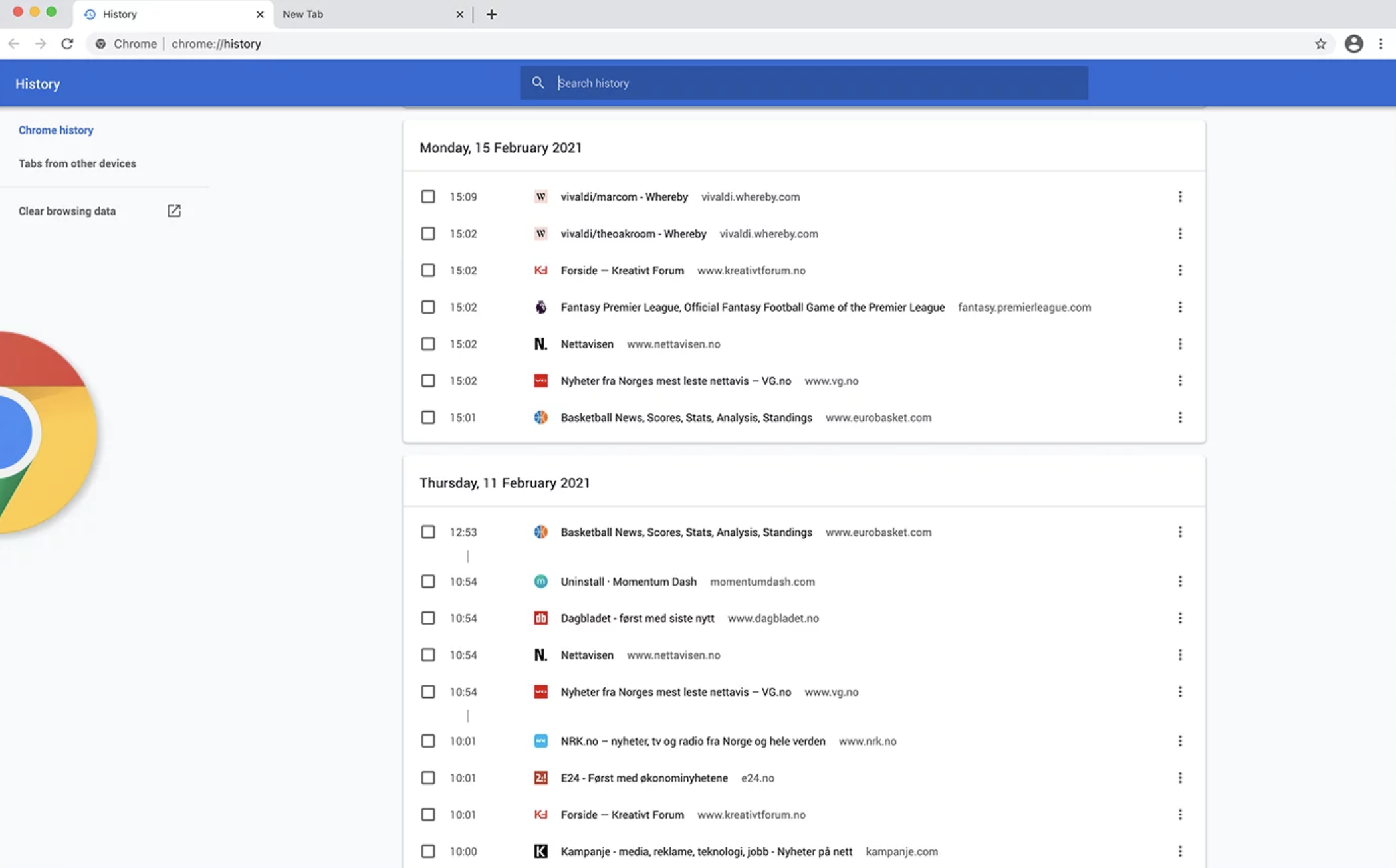
Knowing your users’ online behaviour can help you craft the perfect marketing.
Once you understand the process of segmentation you can now begin creating personalized email campaigns.
4. How to Create Personalized Email Campaigns
Personalization is the key to capturing your subscribers' attention and forging meaningful connections. With behavioural targeting, you can go beyond generic messages and truly speak to your subscribers' interests and needs. The following are several ways you can create personalized email campaigns:
- Use subscriber's name: Address each subscriber by their name in the email to create a sense of personalization and establish a connection.
- Personalized subject lines: Craft subject lines that are tailored to each subscriber's interests or previous interactions. Use their name, reference their recent activity, or include personalized offers to grab their attention.
- Location-based targeting: Customize your emails based on the subscriber's location. This can involve including localized offers, event invitations, or information specific to their geographic area.
- Personalized offers and discounts: Provide exclusive offers, discounts, or rewards based on subscribers' preferences, purchase history, or loyalty status. Make them feel special and valued.
- Leverage browser history: Leverage browsing history to change email content dynamically. For example, suppose a subscriber has recently shown interest in a specific category of products on your website. In that case, you can tailor your email content to showcase similar items or offer relevant recommendations. Adapting to what users are doing lets you demonstrate that you understand their needs, making them more likely to engage with your emails.
- Offer exclusive promotions: Offer exclusive promotions based on subscribers' previous purchases. Behavioural targeting lets you tap into their buying history and identify their preferences. Use this information to create targeted campaigns that offer: personalized discounts, special offers, or product bundles that align with their past purchases.
- Implement Triggered Emails: Consider implementing triggered emails based on specific actions. By utilizing behavioural triggers, you can automatically send highly relevant and timely emails, reminding your subscribers of their interest and encouraging them to take action.
Remember, personalization is all about making your subscribers feel seen and valued. Take the time to analyze and understand their behaviours, preferences, and needs. Tailor your email content accordingly, and you'll create a personalized experience that resonates with each subscriber, fostering a sense of loyalty and driving engagement.

Remember to measure the effectiveness of your campaigns - Photo by Carlos Muza on Unsplash.
Now, let’s consider the most common email marketing strategies.
5. The Most Common Email Marketing Strategies
When it comes to email marketing, there is a wide array of strategies to choose from. However, regardless of which ones you pick for your campaign, you should always look for additional ways to enhance your approach. Let’s consider some common email marketing strategies:
- Welcome emails: One of the most common tactics is using welcome emails, which are sent to new subscribers to introduce your brand and set the tone for future interactions.
- Drip campaigns: Another popular approach is the implementation of drip campaigns, where a series of pre-scheduled emails are sent to nurture leads and guide them through the sales funnel.
- Newsletters: Newsletters provide a way to regularly engage with your audience by sharing valuable content, updates, and promotions.
- Cart abandonment emails: For e-commerce businesses, cart abandonment emails effectively remind customers about their unfinished purchases and entice them to complete the transaction.
- Email recommendations: Finally, personalized email recommendations based on customer preferences and browsing history can drive conversions and foster a deeper connection with subscribers.
- Promotional emails: Send emails to promote specific products, services, discounts, or sales. These emails often include compelling call-to-action buttons and persuasive copy
- Re-engagement emails: Send emails to inactive subscribers to re-ignite their interest and encourage them to re-engage with your brand. Offer exclusive discounts or valuable content to entice them.
- Upselling and cross-selling emails: Recommend complementary products or upgrades based on customers' previous purchases, encouraging them to make additional purchases.
- Post-purchase follow-up emails: Send emails after a purchase to thank customers, provide order confirmations, shipping details, and request reviews or referrals.
- Segmentation and personalization: Segment your email list based on subscriber demographics, preferences, or behaviour, and personalize the content to make it more relevant and engaging.
These are just a few examples of the diverse strategies that can be employed to maximize the impact of your email marketing efforts.
6. Final Thoughts
Overall, behavioural targeting allows you to go beyond mass messaging and instead deliver personalized, relevant, and timely content to your subscribers. It enhances engagement, improves conversion rates, and builds stronger customer relationships, all of which contribute to the success of your email marketing campaigns.
If you require assistance with your email marketing campaign, contact us today!

